The National Near-Earth Object Preparedness Strategy and Action Plan obtained by Intellihub reveals that a presidential level interagency working group for detecting and mitigating the impact of earthbound near-earth objects has been activated and is currently working to detect and mitigate asteroids or comets from striking our planet.
The official National Science Council plan named DAMIEN which stands for "Detecting and Mitigating the Impact of Earth-bound Near-Earth Objects" authored in June of 2018 reveals how the U.S. government has been improving "our Nation's preparedness to address the hazard of NEO impacts by leveraging and enhancing existing national and international assets and adding important capabilities across government."
The plan comprised by the National Science and Technology Council, the Committee on Homeland and National Security, and the Interagency Working Group for Detecting and Mitigating Impacts of Earth-Bound Near-Earth Objects (DAMIEN) (IWG) "builds on efforts by the National Aeronautics and Space Administration (NASA), Department of Homeland Security (DHS), and Department of Energy (DOE) to detect and characterize the NEO population and to prevent and respond to NEO impacts on Earth" and has been activated through the Stafford Act which was invoked by President Donald Trump several weeks ago in order to help fight the coronavirus.
The plan contains "five strategic goals, each supported by a set of strategic objectives and specific associated actions" as follows:
Goal 1: Enhance NEO Detection, Tracking, and Characterization Capabilities: NASA will lead the development of a roadmap for improving national capabilities for NEO detection, tracking, and characterization. Supporting actions will reduce current levels of uncertainty and aid in more accurate modeling and more effective decision-making.The plan goes on to point out how "NEO impacts of varying size could have major environmental, economic, and geopolitical consequences detrimental to the United States, even if the impact is outside U.S. territory."
Goal 2: Improve NEO Modeling, Prediction, and Information Integration: Agencies will coordinate the development of validated modeling tools and simulation capabilities that aid in characterizing and mitigating NEO impact risks while streamlining data flows to support effective decision-making.
Goal 3: Develop Technologies for NEO Deflection and Disruption Missions: NASA will lead development of technologies for fast-response NEO reconnaissance missions and timely missions to deflect or disrupt hazardous NEOs. Developing these technologies before an imminent threat arises will strengthen our ability to prevent NEO impact disasters.
Goal 4: Increase International Cooperation on NEO Preparation: Agencies will work to inform and develop international support for addressing global NEO impact risks. International engagement and cooperation will help the Nation to prepare more effectively for a potential NEO impact.
Goal 5: Strengthen and Routinely Exercise NEO Impact Emergency Procedures and Action Protocols: The United States will strengthen and exercise procedures and protocols for assessing NEO threats, communication regarding threats, and response and recovery activities. Coordinated communications and notifications within the U.S. Government and with foreign governments will improve impact emergency preparedness and reduce the physical and economic harm to the Nation.
"The direct effects from a NEO impact depend on its size, composition, and impact speed. Small, rocky NEOs are likely to explode before hitting the ground, resulting in an airburst that could produce a wider area of moderate damage compared with a similarly sized metallic object that would strike the ground and cause heavier, more localized devastation," the plan reads. "Even small NEOs can have significant destructive effects. For example, on February 15, 2013, an asteroid approximately 20 meters in size created an airburst near Chelyabinsk, Russia, with roughly 20-30 times more energy than that released by the first atomic bombs. It damaged thousands of buildings and injured over a thousand people, mostly due to glass broken by the shock wave (Figure 2). According to current estimates, there are almost 10 million NEOs larger than 20 meters, but they are extremely difficult to detect prior to entering Earth's atmosphere.""Larger NEOs greater than 140 meters have the potential to inflict severe damage to entire regions or continents. Such objects would strike Earth with a minimum energy of over 60 megatons of TNT, which is more than the most powerful nuclear device ever tested. Fortunately, these are far less common and are easier to detect and track than smaller NEOs. After almost two decades of search, NASA and its partners have cataloged about one-third of the estimated 25,000 NEAs that are at least 140 meters."
"Another object approximately 40-60 meters in size exploded over Tunguska, Russia in 1908, with the equivalent of 5-10 megatons of TNT (hundreds of times greater than the first atomic bombs), leveling over 2,000 square kilometers of forest. If a similar event occurred over a major metropolitan area, it could cause millions of casualties (Figure 3). NASA estimates there are over 300,000 objects larger than 40 meters that could pose an impact hazard and would be very challenging to detect more than a few days in advance."
Additionally, the plan states that "objects close to and larger than 1 kilometer can cause damage on a global scale. They can trigger earthquakes, tsunamis, and other secondary effects that extend far beyond the immediate impact area. An asteroid as large as 10 kilometers across is thought to have caused the extinction of the dinosaurs when it struck the Yucatan peninsula some 65 million years ago. NASA is confident that it has discovered and cataloged all near-Earth asteroids large enough to cause significant global damage and determined that they are not on collision courses with Earth, but there is still some chance that large comets from the outer solar system could appear and impact the Earth with warning times as short as a few months."
So how does the government manage a NEO?
If the situation is right NEOs can be managed and mitigated with enough advance warning.
"Unlike other natural disasters (e.g., hurricanes), once a NEO is detected and tracked we can typically predict many years in advance whether it will cause a devastating impact, and, most importantly, we can potentially prevent impacts when detected with sufficient warning time. A NEO may be deflected via spacecraft systems designed to alter the NEO's orbit such that it misses the Earth," as the plan reveals. "When deflection is not practical or advisable, a NEO may be disrupted via spacecraft systems designed to fragment the NEO into smaller pieces that are more likely to miss the Earth or burn up in the atmosphere. The United States must also prepare to manage the consequences of NEO impacts where impact prevention is not feasible, preferable, or successful. Effective emergency procedures can save lives and mitigate damage to critical infrastructure."
Comment: OSTP is whistling past the graveyard here.
The Trump administration plan
Via the Office of Science and Technology Policy:
The Trump Administration's 2018 National Strategy for Space11 recognizes the NEO hazard, and directs agencies to undertake multilateral efforts that promote U.S. scientific, economic, and security interests, including mitigation of space environmental hazards such as near-Earth objects. National Space Policy12 directs the NASA Administrator to "pursue capabilities, in cooperation with other departments, agencies, and commercial partners, to detect, track, catalog, and characterize near-Earth objects to reduce the risk of harm to humans from an unexpected impact on our planet."Goal 3: Develop Technologies for NEO Deflection and Disruption Missions
The United States should lead in establishing a coordinated global approach for tracking and characterizing NEO impact threats, preparing to prevent damaging impacts where possible, and responding to and recovering from NEO impacts. While international cooperation is the most effective way to manage NEO impact risks, the United States should also be prepared to act independently through all phases that may occur during an impact scenario (Figure 5) to protect and preserve America's interests.
Recognizing the lack of a whole-of-government or international strategy for addressing NEO hazards, the Committee on Homeland and National Security within the National Science and Technology Council (NSTC) established an Interagency Working Group (IWG) for Detecting and Mitigating the Impact of Earth-bound Near-Earth Objects (DAMIEN). The DAMIEN-IWG developed this Strategy and Action Plan to enhance national preparedness over the next decade for the hazard of NEO impacts. Its primary role is to help organize and coordinate NEO-related efforts within agencies, with a particular focus on efforts that are already existing and resourced.
Via OSTP:
Preparing to respond effectively to a NEO impact threat scenario includes developing capabilities for both deflection and disruption. There is much that is not known about the orbits, size, and material composition of many NEOs, and it is essential to account for these uncertainties when developing and utilizing technologies for impact prevention. For example, multiple technologies may be suitable for preventing NEO impacts that are predicted well in advance, while disruption via nuclear explosive device may be the only feasible option for NEOs that are very large or come with short warning time. Observing NEOs over many years (as outlined in Goal 1) will improve the understanding of their orbits and future trajectories, and should also improve our understanding of their size and composition, which would assist in planning for deflection or disruption space mission campaigns.
The strategic objectives to develop technologies for NEO deflection and disruption missions are:
- Develop technologies and designs for rapid-response NEO reconnaissance missions
- Develop technologies and designs for NEO deflection and disruption missions Develop technologies and designs for rapid-response NEO reconnaissance missionsAn effective deflection or disruption mission will most likely require more detailed and accurate information about the incoming NEO than existing and planned remote observational capabilities can provide. A capability to rapidly launch a spacecraft to rendezvous with or fly by the NEO and perform reconnaissance is the only clear way to meet this need. A rapid reconnaissance mission would ideally provide up-close imagery, compositional information, and mass measurements.3.1 Assess technologies and concepts for rapid-response NEO reconnaissance missions. This assessment should include dedicated reconnaissance via spacecraft flyby or rendezvous, as well as mission concepts in which the reconnaissance spacecraft could also carry out deflection or disruption. The assessment should consider both commercial-off-the-shelf parts and new hardware development. [Short term; NASA]
- 3.2 Evaluatethecapabilitiesofcurrentandprojecteddomesticandinternationallaunchvehicle infrastructure to support planetary defense missions. This analysis includes considering both rapid-response reconnaissance and deflection/disruption missions, accounting for integration and testing processes, and recommending processes for accomplishing rapid response planetary defense space-lift. [Short term; NASA/LSP, Air Force Space Command]
- 3.3 Create plans for the development, testing, and implementation of NEO reconnaissance mission systems. These plans should lead to establishment of operational NEO reconnaissance capabilities, including rapid-response. Planning could include developing a system to automatically calculate possible trajectories for planetary defense spacecraft to reach potentially hazardous NEOs. [Short term; NASA]
The United States should develop and validate technologies and techniques for deflecting and disrupting NEOs of varying physical properties before the need arises to deploy them in an actual threat scenario. For most NEO threat scenarios, Earth impact prevention capabilities should include the ability to rapidly reach the NEO, conduct necessary rendezvous and proximity operations, and deploy deflection/disruption technologies. Additionally, deploying an instrumented means of measuring the deflection over time can provide valuable assurance of mission success and critical post-mission situational awareness. Where practical, we should establish confidence through a real-world demonstration — consistent with all U.S. treaty obligations and international commitments — of the deflection or disruption technique, potentially as a part of a mission or program with broader scientific and exploration objectives.
- 3.4 Identify, assess the readiness of, estimate in the costs of, and propose development paths for key technologies required by NEO impact prevention concepts. This assessment should include the most mature in-space concepts — kinetic impactors,14 nuclear devices, and gravity tractors15 for deflection, and nuclear devices for disruption16 — as well as less mature NEO impact prevention methods. Technology assessments should consider contemporary work, including potential synergies with relevant private industry interests (e.g., asteroid mining). They should also consider NEO impact scenarios that may have received insufficient attention thus far (e.g., binary asteroids, high-speed comets). [Short term; NASA, NNSA, DoD]
- 3.5 Performariskanalysisonplanetarydefensemissionsuccessundervaryingassumptionsand circumstances. This effort will address current deficiencies in understanding how rapidly the United States can deploy planetary defense missions while maintaining acceptable reliability and mission success probability, and with sufficient redundancy. [Medium term; NASA]
- 3.6 Develop preliminary mission designs for NEO deflection mission campaigns. This action includes preliminary designs for a gravity tractor NEO deflection mission campaign, and for a kinetic impactor mission campaign in which the spacecraft is capable of either functioning as a kinetic impactor or delivering a nuclear explosive device. For the latter case, the spacecraft would contain all systems necessary to carry and safely employ a nuclear explosive device but would carry a mass simulator with appropriate interfaces in place of an actual nuclear device. Designs should include reconnaissance spacecraft and methods to measure the achieved deflection. [Medium term; NASA, NNSA]
- 3.7 Conduct a series of flight demonstrations to validate NEO deflection and disruption system concepts. These flight demonstrations would focus on harmless NEOs to test and validate deflection/disruption system concepts and identify design issues for correction. Any flight demonstrations relevant to nuclear explosive techniques would not incorporate an actual nuclear device, or involve any nuclear explosive testing. Results would inform decision-making processes during an actual NEO threat scenario. Thorough flight testing of a deflection/disruption system prior to an actual planetary defense mission would substantially decrease the risk of mission failure. [Long term; NASA]
ELE coming? World's populace brought into lockdown ahead of anticipated, possible, April 29 extinction-level event Do governments around the world know something we don't? Did they lock down the world in preparation for April 29 deep impact?
Hundreds of governments around the world have brought their citizenry into total and complete martial law-style lockdown ahead of an anticipated and possible extinction-level event (ELE) of biblical proportions.
In the name of "the invisible enemy" known as COVID-19 over one half of the world's population remains locked into their homes as a 3.5-mile wide planetary killer asteroid 1998 OR2 and a comet C/2019 Y4 (ATLAS) half the size of the Sun and 5 times the size of Jupiter make their close approach to earth on April 29.
And if that is not enough, the same university that tracks the number of COVID-19 cases worldwide on a live interactive map is also the same university that diverts the trajectory of near-earth objects (NEO) asteroids away from the earth, as I reported in my latest bombshell report titled World locked down, braced for impact? Johns Hopkins University controls COVID-19 case map and trajectory of NEO asteroids, comets.
As of last year, "NASA has detected that one of the largest known potentially hazardous asteroids will approach Earth less than a year from now. Depending on several factors in space, the approaching planet-killer asteroid could end up on a path straight to Earth," IB Times reports.
Close approach on April 29
From IB Times: (emphasis mine)
The approaching asteroid has been identified by the space agency as 1998 OR2. It was first discovered on June 30, 1987, and is known to frequently approach the orbits of Earth and Jupiter. It was classified as an Amor asteroid, which means its orbit covers both the Sun and Earth.Asteroid orbital elements and physical perimeters:
As indicated by NASA's asteroid tracking department, which is known as the Center for Near Earth Object Studies (CNEOS), 1998 OR2 has an estimated diameter of 13,500 feet. Given its size, the asteroid is longer than the National Mall in Washington D.C., which stretches from the Capitol Building to the Lincoln Memorial.
According to CNEOS, 1998 OR2 will fly past Earth on April 29, 2020, at 5:56 am EDT....
The NEO asteroid's variable data reveals a direct strike with Earth is possible. View close approach data here.
Several days ago a meteor the size of a fist impacted the Earth in Nigeria and the event went unreported for the most part.
As a caveat...
According to a press release issued by the John Hopkins Physics Laboratory on Nov. 6, 2019: "The Johns Hopkins Applied Physics Laboratory (APL) team building NASA's first planetary defense test mission — the Double Asteroid Redirection Test (DART) — has completed two key mission reviews that bring DART steps closer to the challenging task of diverting an asteroid."
"DART will be the first mission to demonstrate asteroid deflection using a kinetic impactor technique. This will involve autonomously piloting the APL-built spacecraft into an asteroid at roughly 4 miles (or about 6.5 kilometers) per second. The ultimate objective is to measure the resulting change in orbit of the small moon Didymos B around the primary asteroid, Didymos A. The asteroid system will be nearly 7 million miles (11 million kilometers) from Earth when DART arrives, and no threat to the planet, but its proximity makes it ideal for collecting ground-based observations before and after impact," the press release states.
Moreover, the statement says it's "all systems go" in April of 2020 meaning that the project will "move forward."
Related:
Are you #BracedForImpact?
You can read the full plan for yourself via the WhiteHouse.gov website.
Shepard Ambellas is an opinion journalist, analyst, political pundit, and the founder and editor-in-chief of Intellihub News & Politics (Intellihub.com). Shepard is also known for producing Shade: The Motion Picture (2013) and appearing on Travel Channel's America Declassified (2013). Shepard is a regular contributor to Alex Jones' Infowars platform. Read more from Shep's World. Follow Shep on Facebook and Twitter. Subscribe to Shep's YouTube channel.
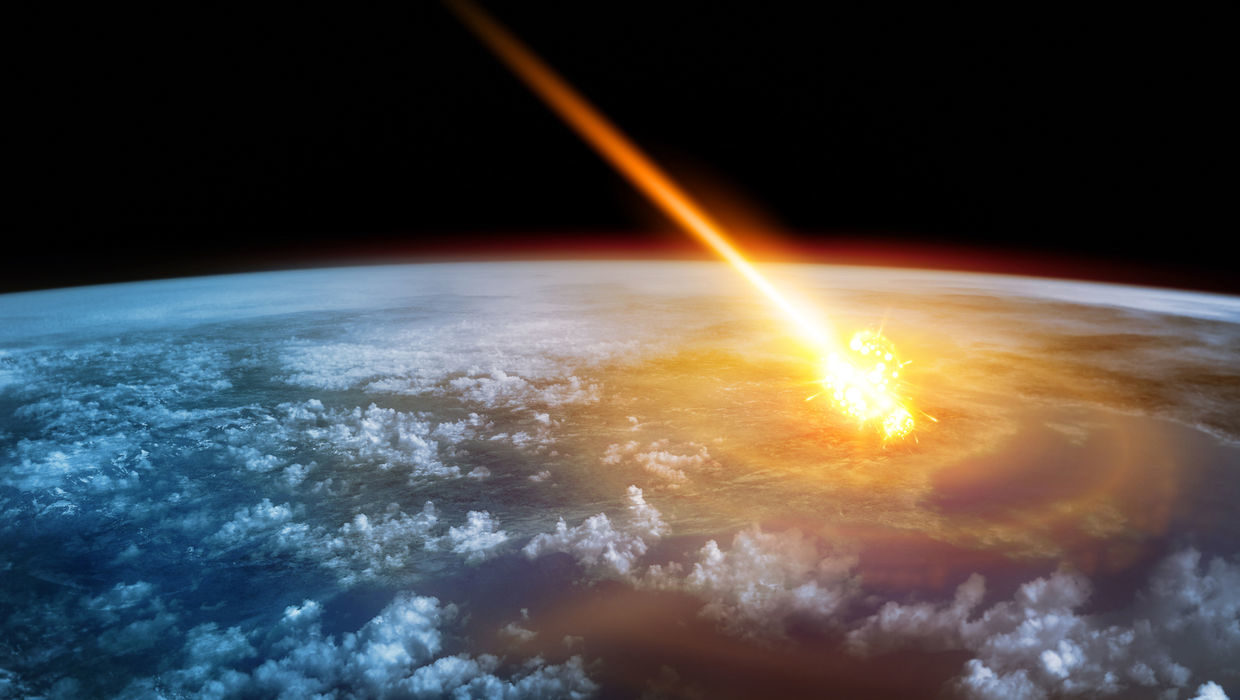
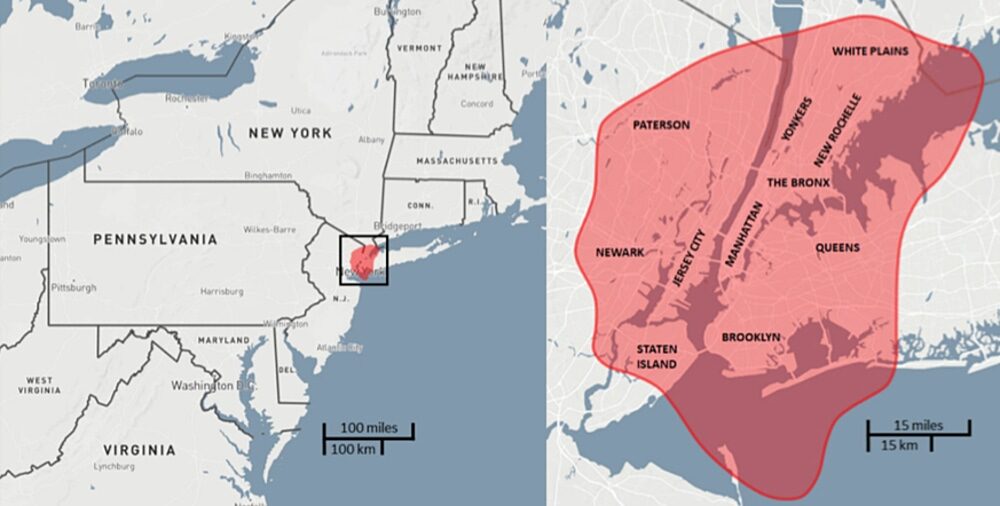
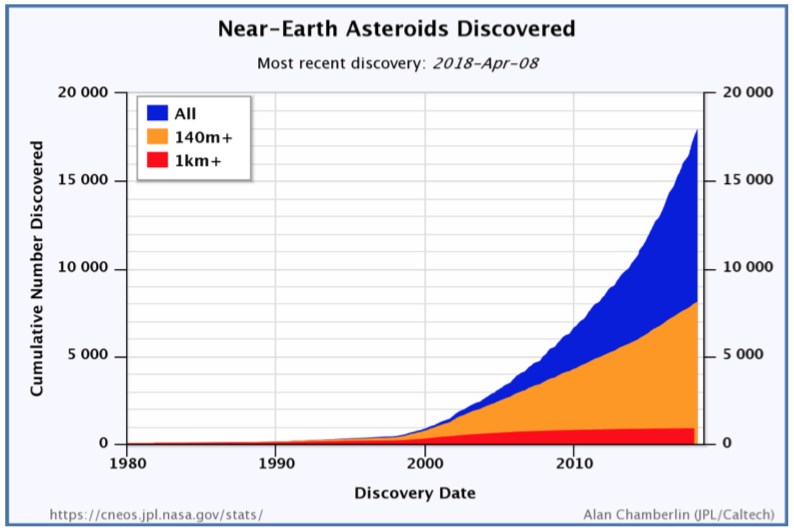
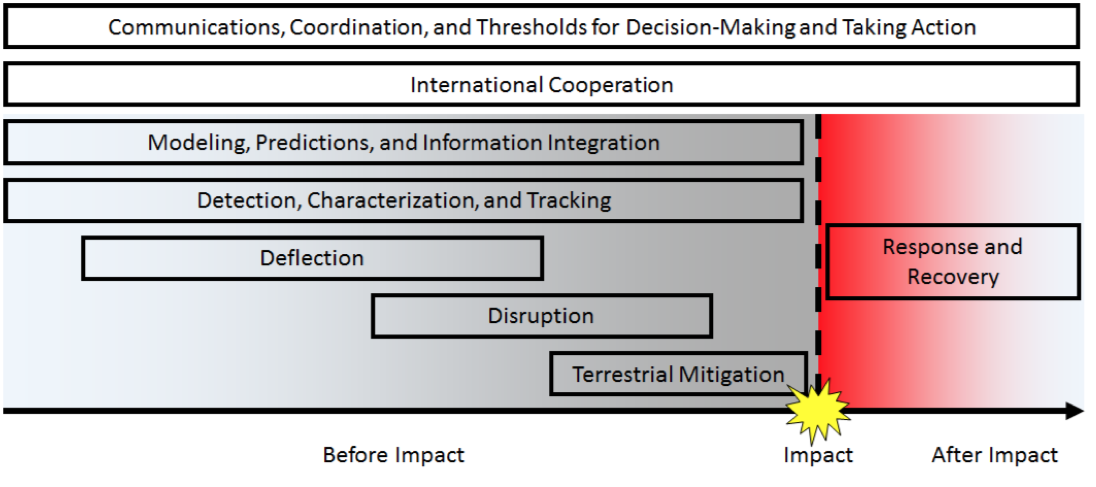
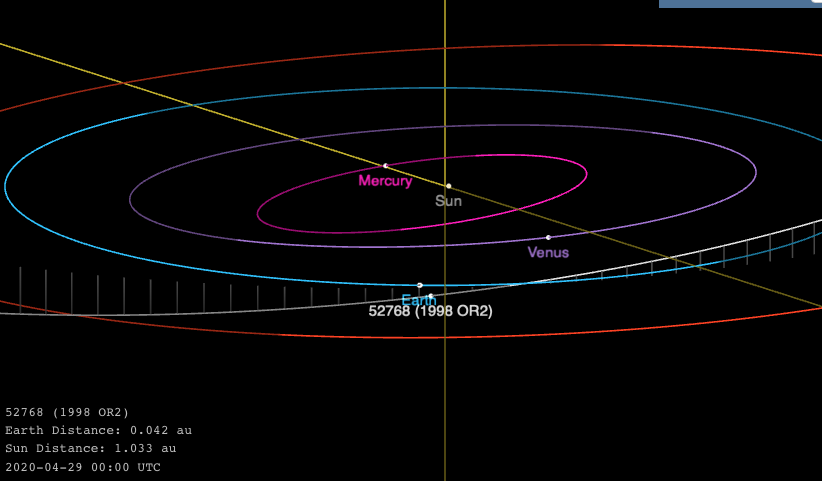
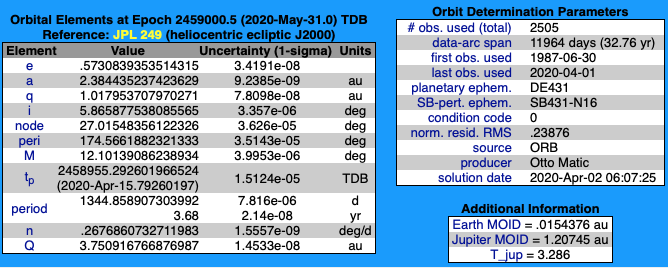



Comment: Of course, no asteroid hit Earth in April, 2020 when this was published. But such an ONGOING threat may well factor into the clearly coordinated lockdown mania around the world. Remember the words of British astronomer Victor Clube, author of The Cosmic Serpent and The Cosmic Winter, in a report commissioned by the U.S. Air Force: Or perhaps a "pamdemic" might do just as well?